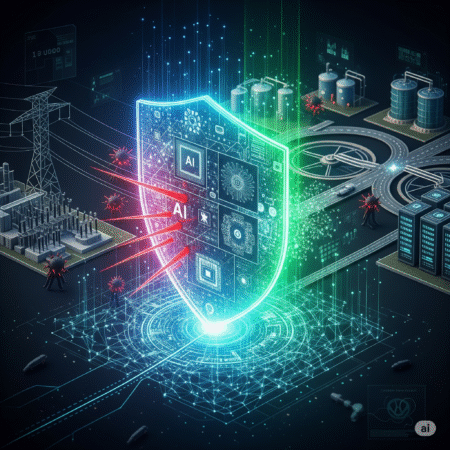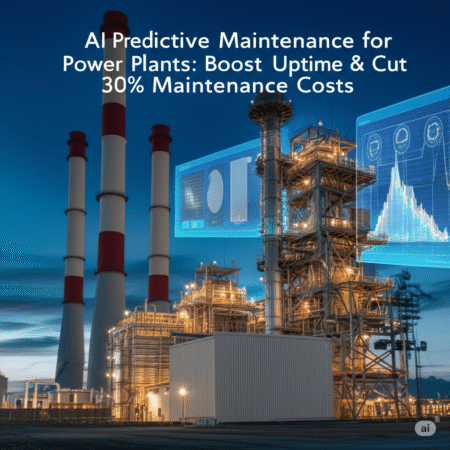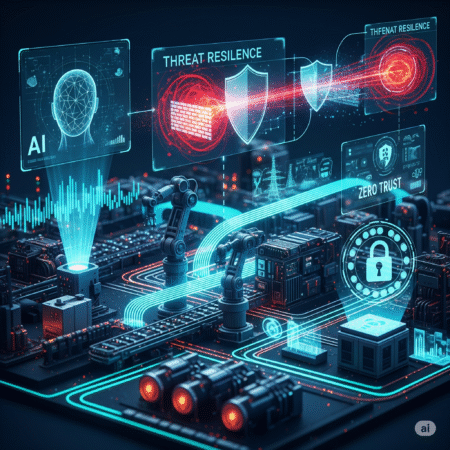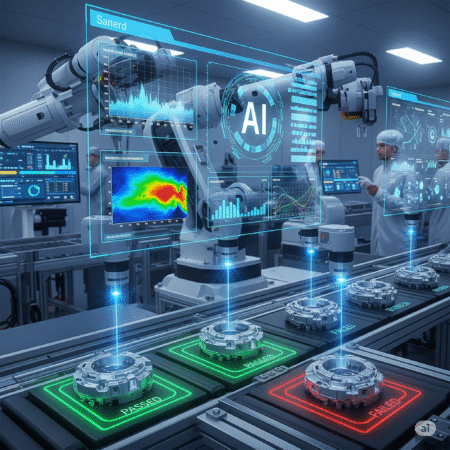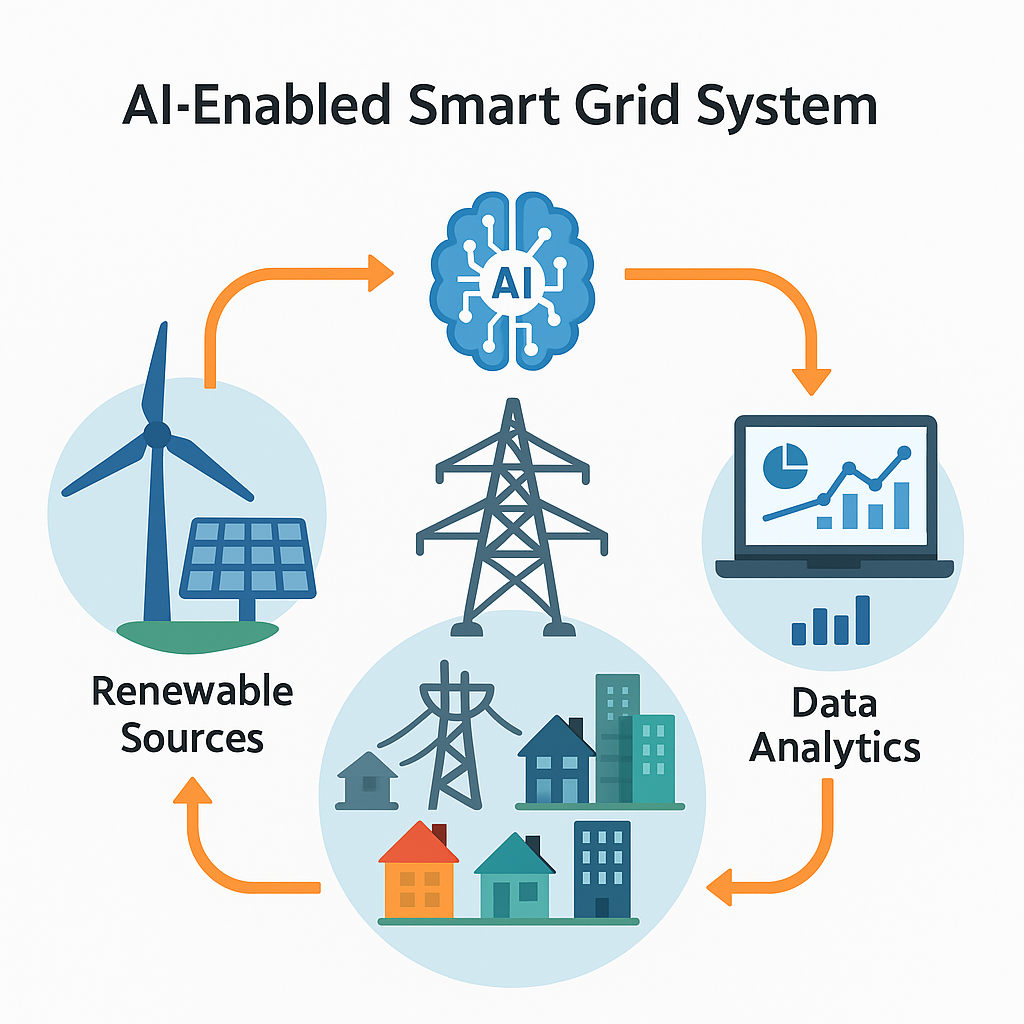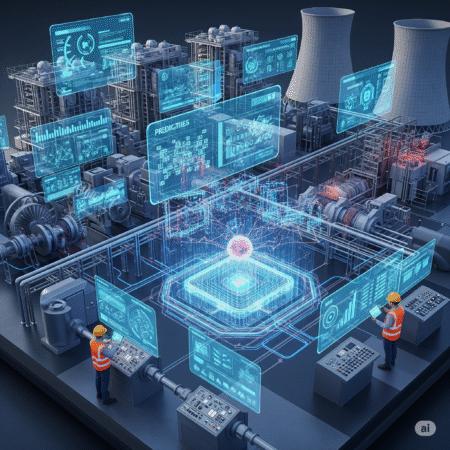
- Introduction: Why AI Matters for Infrastructure Security
- Top Threats Facing Critical Infrastructure
- How AI Transforms Cyber Defense
- High‑Impact Use Cases: Threat Detection, Response & IAM
- Industrial ICS/OT Protection: AI in Control Systems
- Challenges: Adversarial Attacks, Explainability & Ethics
- Regulations & Standards: Zero Trust & IEC 62443
- Future Trends: CyberAGI, Generative AI & Active Defense
- Conclusion: Why Starting Now Matters
- Take the Next Step
- Frequently Asked Questions
Introduction: Why AI Matters for Infrastructure Security
Critical infrastructures – like power grids, water treatment, and transport networks – form the backbone of modern society. But they’re also prime targets for state‑level attackers and destructive malware such as Industroyer and Pipedream. Traditional defenses often fall short. AI introduces real-time threat analysis, automated response, and risk prediction, ensuring safety and continuity.
Top Threats Facing Critical Infrastructure
- Advanced ICS malware: Industroyer disrupted Kyiv’s power grid, while Pipedream targets PLCs in industrial networks.
- Deepfake social engineering: Tools like GhostGPT generate hyper-realistic phishing content that bypass basic filters.
- Insider threats and misconfigured access escalate risks without immediate detection.
AI-based defenses shine because they adapt to unknown threats and evolving TTPs.
How AI Transforms Cyber Defense
AI boosts cybersecurity by automating complex detection and response:
- Threat detection & behavior isolation: ML models detect anomalies in log patterns and network flows beyond signature-based rules.
- Vulnerability management prioritization: Systems like Splunk use AI to triage critical fixes in real-time.
- Predictive threat intelligence: AI systems forecast attack likelihood based on behavior, exposure, and asset inventory.
- Automated incident response: AI executes containment, isolation, and mitigation within seconds of detection.
High‑Impact Use Cases: Threat Detection, Response & IAM
- Intrusion Detection Systems (IDS) with self-learning AI reduce false positives dramatically.
- Endpoint protection: SentinelOne, Darktrace, and more use AI to detect never-before-seen malware.
- Behavioral biometrics & IAM: Identifies compromised accounts via anomaly detection in login behavior and device usage.
- Automated SOC triage: AI clusters related alerts, saving human analysts time and clearly prioritizing threats.
- Deepfake detection engines identify fraudulent multimedia targeting critical systems or executives.
Industrial ICS/OT Protection: AI in Control Systems
Infrastructure operators use AI to safeguard ICS environments:
- Anomaly detection in operational sensors: AI monitors unusual PLC or SCADA traffic for early indicators of sabotage.
- Explainable ML for decisions: Tools use interpretable models to detect anomalies without relying on “black-box” deep learning alone.
- Adversarial robustness: Training AI with adversarial samples improves resilience and reduces false negatives.
Challenges: Adversarial Attacks, Explainability & Ethics
While powerful, AI cybersecurity isn’t without risk:
- Adversarial ML and model poisoning: Blinds AI to attacks by manipulating training data or crafting crafted inputs.
- Lack of explainability: Stakeholders demand transparency in AI decisions, especially for blocking network access or logins.
- Skills gap: Security teams need AI-trained analysts to tune and manage models. Gartner reports ~65% of SOCs lack needed skills.
- Vendor lock-in & regulation compliance: Policies like Zero Trust and frameworks such as IEC 62443 are essential for OT security compliance.
Regulations & Standards: Zero Trust & IEC 62443
- Zero Trust frameworks ensure every access is verified – no implicit trust between devices/users. It’s recommended by RBI for securing critical systems.
- IEC 62443 sets international OT cybersecurity standards – from design to deployment – mandating technical and policy controls in industrial automation environments.
Compliance not only reduces risk but also improves resilience and trust.
Future Trends: CyberAGI, Generative AI & Active Defense
- CyberAGI: Safe Security’s research into autonomous “general intelligence” platforms that actively manage cyber threats and zero trust access policies.
- Active defense & deterrence tools: Real-time remediation systems like kill-switches that instantly disconnect compromised devices or services.
- Federated learning & Edge AI across OT/ICS networks to reduce latency and protect privacy while improving threat detection at the source.
Conclusion: Why Starting Now Matters
AI-enabled cybersecurity isn’t future talk – it’s critical infrastructure protection already in action. Whether power grids, water systems, or transport networks, AI offers real-time visibility, resilience, and proactive defense. Waiting means risking downtime, disaster, or national crisis.
Organizations that invest today in AI tech, compliance frameworks, and trained analysts will lead tomorrow’s secure industrial landscape.
Take the Next Step
Want to explore AI-driven security solutions for your infrastructure?
👉 Check out our guide on AI Security in Industrial Robotics
👉 Subscribe to EngineerDaily.News for weekly insights on cyber‑AI, infrastructure protection, and industrial resilience.
Frequently Asked Questions
Q: How effective is AI at stopping state-level cyber attacks?
AI can detect behavior anomalies even from advanced malware like Industroyer or Pipedream before damage spreads.
Q: Can adversarial attacks fool AI cybersecurity?
Yes, unless models are trained using adversarial techniques and defense-in-depth strategies.
Q: Is AI necessary for small infrastructure operators?
Even small utilities benefit—AI offers scalable platforms for threat detection and zero trust compliance.
